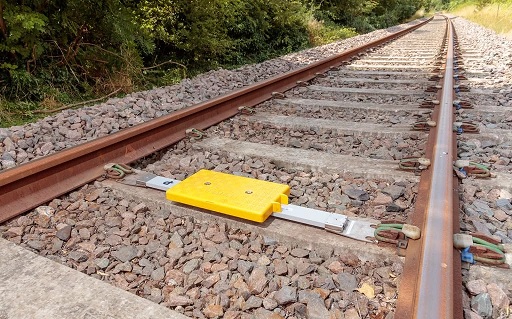Automated balise layout assistance for railways
The number of balises: an important parameter for the cost of a CBTC system

Balises allow to define the location of a train and thus to manage the spacing between trains.
They are an indispensable signalling element for the safety and optimization of rail traffic.
In the context of Communication Based Train Control (CBTC) systems, part of the system deployment engineering is devoted to defining the position of the balises.
Balises are a major cost center:
- production cost of the balise and its mounting bracket
- cost of deployment: layout study, staking, etc.
On average, the overall cost of a balise (production & deployment) can reach several thousand euros, bearing in mind that a metro line may require the installation of several hundred balises. In order to reduce these costs, Systerel has developed a solution that minimizes the number of balises to be installed on the track: BLAST (Balise Layout ASsistanT).
Optimizing the number of balises with BLAST
BLAST is an automated and parameterized solution for calculating the number of balises. It optimizes the number of balises while respecting the performance requirements of the system.
BLAST searches for an optimal solution satisfying all the requirements associated with the line under consideration by using the minimum number of balises. It also provides the traceability to the requirements that led to the location of each balise. This solution takes into account any restriction zones (an area that must not contain any balise) and optimizes the effort linked to iterations resulting from context changes.
Thus, the comparison between different sets of rules and the measurement of the economic impact of a modification on a requirement is performed very quickly.
BLAST not only minimizes the number of balises, but also allows fine-tuning the rules as feedback is received from track survey and the number and position of balises to be adjusted very quickly.
BLAST offers many advantages
- Optimal result: the results obtained with BLAST are formulated to optimize the number of balises and are much faster than a manual approach.
- Simplification of the industrial process: the specification is simplified: the engineer focuses on the expression of his needs; the mutualization of constraints is done by the solution.
- Objective cost design: the savings made by changing parameters can be quantified, especially when the rules depend on performance systems outside the CBTC system.
Our references
Paris Metro

- Definition of the layout of the tags.
- Study of different variants of odo tachymetry.
- Study of several approach rules for off-station stops.
- Comparative study with existing beaconing: substantial savings in the number of tags.
